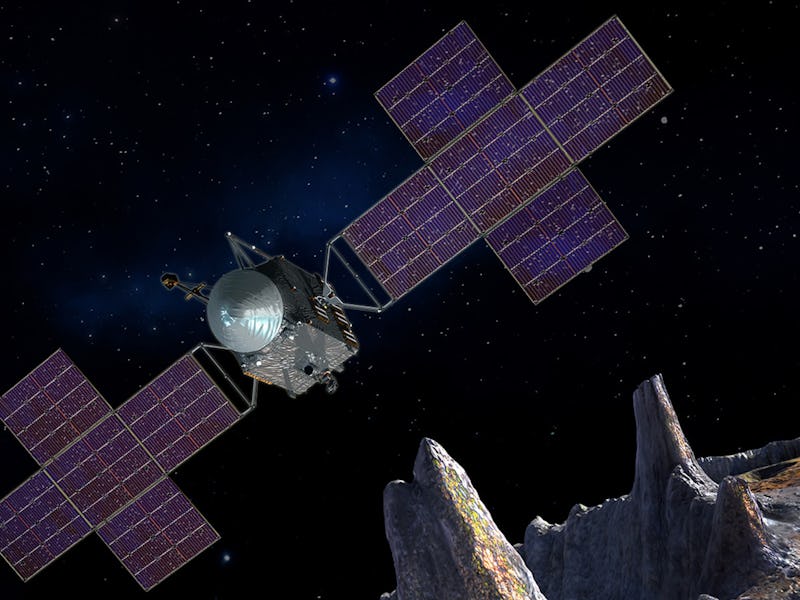NASA Moves Up Schedule for Mission to Metal Asteroid

NASA has dramatically moved up the schedule for its highly anticipated Psyche mission: We’ll get to check out this amazing metal asteroid four years sooner than we’d thought. The spacecraft will launch in the summer of 2022, and its exploration of Psyche, the only known metal world, will begin in 2026.
The mission was originally supposed to launch in 2023 and arrive at Psyche in 2030. The launch has been moved up one year, and even more incredibly, the cruise time has been reduced by about half.
“We challenged the mission design team to explore if an earlier launch date could provide a more efficient trajectory to the asteroid Psyche, and they came through in a big way,” NASA’s Jim Green said in a press release.
The new trajectory no longer requires an Earth gravity assist (these assists take advantage of a planet’s natural movement to change a spacecraft’s path or speed), which shortens the time of the mission. It will, however, still use a Mars gravity assist. The new trajectory is also more efficient because the craft — which is currently being built by Space Systems Loral (SSL) in California — will travel farther away from the sun, meaning that it will require less heat protection.
An artist imagines the SSL spacecraft exploring Psyche.
In addition to a new route, the craft is going to have a more powerful design. SSL has decided to increase the strength of its solar array into a five-panel x-shaped system, which is typically used for more difficult missions than Psyche was originally intended to be. “Much like a sports car,” reads the NASA release, “by combining a relatively small spacecraft body with a very high-power solar array design, the Psyche spacecraft will speed to its destination at a faster pace than is typical for a larger spacecraft.”
Psyche is an asteroid between Mars and Jupiter that’s thought to be made almost completely of nickel-iron metal (like Earth’s outer core). Scientists suspect that Psyche may be the core of an early planet, so exploring it could help us better understand how planets form. The asteroid may be covered with water, in which case we might be able to use it for mining water and minerals in the future.
The Psyche launch will now take place in only five years. Until then, there are plenty of other NASA missions happening now on which we can focus, including the Cassini spacecraft’s exploration of Saturn.